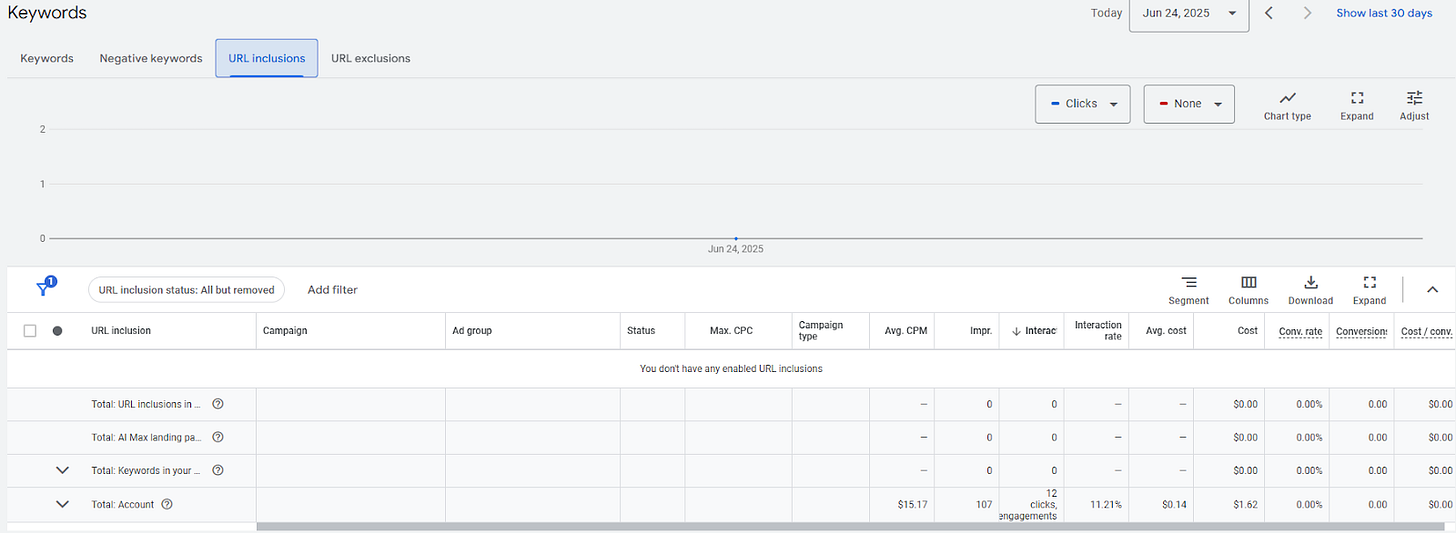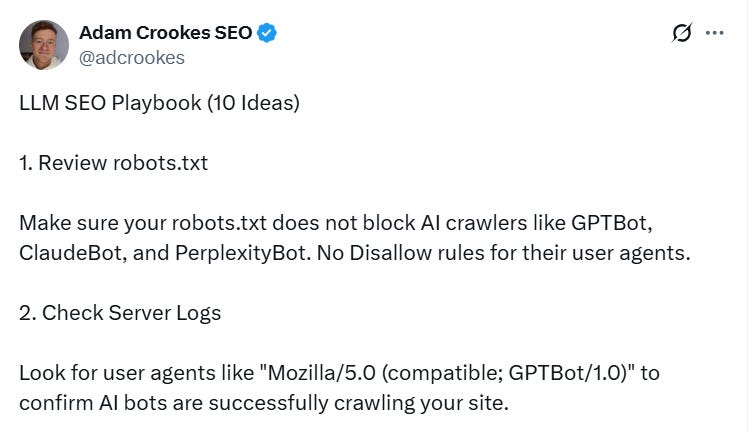The Loyalty Misdiagnosis
❤️🩹Why Repeat Buyers Aren’t Always Loyal, Google Ads Adds New URL Controls, Google Confirms Extensions Don’t Matter, and more!
Howdy Readers 🥰
❤️🩹 The Loyalty Misdiagnosis: Why Repeat Buyers Aren’t Always Loyal
🧭 Google Ads Adds New URL Controls, Google Confirms Extensions Don’t Matter
🚀Tweet of the Day
If you’re new to Buyology then a hearty welcome to you, You’ve reached the right place alongside 50k+ amazing people, Before you forget, if someone forwarded this newsletter to you, don't forget to subscribe to our newsletter so you never miss out!
Together with Insense
Tired of influencer roulette? Get fully briefed UGC creators in just 48 hours.
The right UGC cuts acquisition costs in half and 4× your ad CTRs but only if the creators follow the playbook.
Trying to manage that manually? Burnout guaranteed.
Insense gives you instant access to a global pool of 68,500+ micro-influencers and UGC specialists, pre-vetted, pre-briefed, and performance-proven across 35+ countries.
Top brands use Insense to run seamless campaigns from product seeding and gifting to TikTok Shop and affiliate campaigns, and whitelisted ads.
Nurture Life cut turnaround time from 2 months to 2 weeks using just one marketer and Insense
Solawave received 180+ ad-ready assets in a single month by simply shipping products
Matys Health achieved 12× reach through Spark Ads on TikTok
Want to skip sourcing chaos and launch faster?
Book a free strategy call before July 4th and unlock a $200 bonus for your first campaign!
❤️🩹 The Loyalty Misdiagnosis: Why Repeat Buyers Aren’t Always Loyal
Repeat buyers are every brand’s comfort metric. They make dashboards look healthy, CAC look efficient, and LTV look scalable. But here’s the hard truth: repeat ≠ loyal.
Many customers buy again out of habit, convenience, subscription inertia, or a lack of viable alternatives. That doesn’t mean they love you. It means you haven’t lost them yet. And the most dangerous thing in retention isn’t churn, it’s false loyalty.
Loyalty isn’t behavioral, it’s emotional.
You can’t measure true loyalty with order frequency alone.
Real loyalty is when a customer defends you, recommends you, and chooses you even when cheaper, faster options appear. It’s not just what they do, it’s what they feel when they think about your brand.
So, what are the actual signals of real loyalty?
Here’s what expert teams track:
Voluntary re-engagement (e.g., opening emails with no promo inside)
Referrals or unprompted advocacy
Cross-category purchases (e.g., buying new SKUs without needing them)
Brand memory and emotional attachment (especially weeks after purchase)
These signals tell you who’s in your orbit versus who’s still floating.
What builds emotional loyalty?
Three things: consistency, resonance, and memory.
If your post-purchase content reaffirms identity, if your community reinforces shared beliefs, and if your visuals imprint the right emotional cues, then loyalty builds. It’s not one surprise & delight moment, it’s dozens of quiet reinforcements over time.
This is where most creatives underperform.
Even brands with gorgeous ads fail to embed emotional memory.
Why? Because they optimize for clicks, not recall. Neurons AI helps close this gap by testing whether your creative creates lasting brand encoding, not just immediate engagement.
Think of it as a loyalty signal pre-check. If the brain forgets you in 3 seconds, no discount will save you in 30 days. You can book a free demo with Neurons here to test if your creative earns memory, or just the next click.
Final thought: Retention isn’t just about getting someone to come back. It’s about why they choose to return when they don’t have to. Stop measuring repeat orders like loyalty, and start measuring emotional return on brand.
🧭 Google Ads Adds New URL Controls, Google Confirms Extensions Don’t Matter
Google just rolled out a new way to control which pages power your Search ads, and clarified (again) that URL extensions have zero impact on SEO, giving advertisers more control over ad generation and debunking one of the most persistent SEO myths still floating around.
The Breakdown:
1. URL Exclusions and Inclusions now live in Google Ads - Advertisers can now exclude certain site sections from feeding into Google’s dynamic ad generation. Inclusions are also available, meant to prioritize high-value pages, but early testers report the feature isn’t fully functional yet.
2. Page selection is guided and campaign-level only - A prompt in the new interface lets you include or exclude URLs by category, content, page title, or direct link. However, these filters only apply at the campaign level.
3. Google debunks URL extension myths - In a Reddit thread, Google’s John Mueller confirmed that whether your URL ends in .html, .htm, or nothing at all makes no SEO difference. The format is historical, and very few websites still use static file structures.
The new URL tools offer tighter control over how Google builds your ads, crucial if you want to avoid low-converting or irrelevant pages being surfaced. And on the SEO front, it’s one more reminder: obsessing over URL endings is wasted energy. Focus on what actually moves the needle.
🗝️ Tweet of the Day
Advertise with Us
Wanna put out your message in front of over 50,000 best marketers and decision makers?
Checkout our Partner Kit here🤝
At Buyology, we care about our readers and want to provide the best possible experience. That's why we always look for ways to improve our content and connect with our audience. It would be amazing if you could hit us up with feedback about our content or absolutely anything, we are always up for a chat 🥰
Thanks for your support, We'll be back with more such content 🥳



